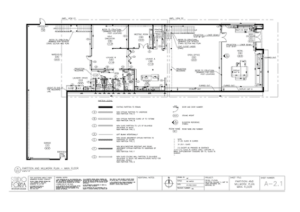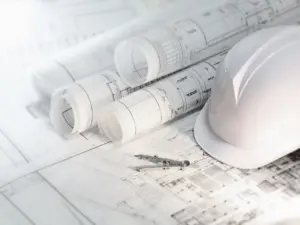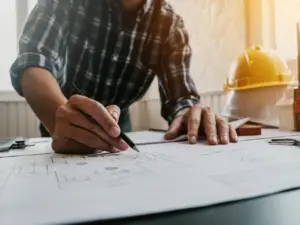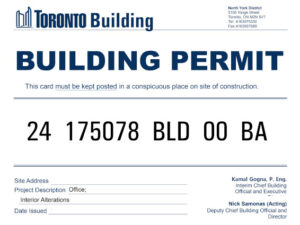In construction, time is money, and the right interior designer can make or break a project’s efficiency. A great designer ensures that details are clear, timelines are respected, and materials arrive on schedule—all while reducing unnecessary stress. But how can contractors be sure they’re choosing the right designer to work with? Here’s what to look for:
Detailed, Contractor-Friendly Plans
Not all design drawings are created equal. The best interior designers provide highly detailed construction documents, including:
Precise millwork and cabinetry plans
Structural and MEP coordination where necessary
Clear material specifications to prevent misordering
The fewer the gaps in information, the fewer the headaches during construction.
Understanding of Building Codes & Permitting
A designer who understands local building codes and permit requirements helps avoid costly revisions and delays. They should be able to provide code-compliant documentation upfront, reducing the need for back-and-forth with city officials and ensuring smooth approvals.
Proven Experience with Contractors
Not every designer is used to working with contractors, and that can lead to unnecessary complications. Look for designers with a track record of seamless collaboration. Testimonials, case studies, or referrals from other trades can highlight their ability to work efficiently on-site.
Respect for Sequencing & Construction Timelines
A project is only as strong as its schedule. Designers who account for proper sequencing—ensuring materials arrive on time, coordinating finishes efficiently, and preventing last-minute design changes—help keep projects on track and within budget.
Clear Communication & Problem-Solving
Every project encounters challenges, but a great designer anticipates issues before they arise and works proactively to resolve them. They should be:
Clear in documentation and instructions
Open to adjustments that keep construction moving smoothly
Access to Trade-Only Resources
Designers with strong industry connections can offer access to high-quality, trade-only materials and custom solutions that make a contractor’s job easier—whether it’s pre-vetted millwork shops, specialty finishes, or custom-built components designed to fit perfectly.
The Right Designer Makes All the Difference
A contractor-designer partnership works best when both sides understand each other’s processes. Finding a designer who prioritizes clarity, efficiency, and problem-solving ensures fewer delays, reduced stress, and a smoother build from start to finish.
Frequently Asked Questions (FAQ):
Why would a contractor benefit from working with an interior designer who understands building codes and permitting?
1. Faster Permit Approvals
A designer familiar with local codes ensures that plans are compliant before submission, reducing the likelihood of rejections, revisions, and back-and-forth with city officials. This means fewer project hold-ups and a smoother approval process.
2. Fewer Costly Revisions
Non-compliant designs can lead to expensive rework mid-project. A knowledgeable designer proactively integrates code requirements—such as fire safety, accessibility, and structural considerations—into the initial plans, preventing costly mistakes.
3. Less Back-and-Forth with Inspectors
A designer who understands permitting knows what inspectors look for, ensuring documentation and plans align with regulations. This minimizes inspection failures, re-inspections, and unexpected project pauses.
4. Compliance with Safety Regulations
Building codes cover essential safety measures like egress paths, electrical layouts, and plumbing requirements. A designer who incorporates these elements correctly helps avoid safety violations that could lead to fines or legal issues.
5. Streamlined Communication Between Teams
Contractors don’t have to spend time decoding vague or incomplete design plans. A designer with code knowledge delivers clear, construction-ready documents that integrate structural, MEP, and material requirements correctly.
6. Reduced Liability Risks
If a project doesn’t meet code, liability often falls on both the contractor and the property owner. Working with a designer who ensures compliance from the start mitigates risks of lawsuits, insurance claims, or disputes over faulty design execution.
How can you prove that an interior designer has experience with contractors?
Review Their Portfolio with a Construction Focus
- Look for past projects that involve extensive construction, millwork, or structural coordination.
- Check if their designs include detailed technical drawings, not just conceptual renderings.
- See if they have worked on large-scale renovations, commercial projects, or complex residential builds that required collaboration with contractors.
Ask for Contractor References
- A well-experienced designer should have contractors who can vouch for their ability to collaborate effectively.
- Contact contractors they’ve worked with and ask about the designer’s communication, problem-solving, and understanding of construction sequencing.
Evaluate Their Construction Documentation
- Request examples of their construction drawings, cabinetry/millwork shop drawings, and material specifications.
- Look for clarity, accuracy, and the inclusion of structural or MEP coordination details.
- Ensure their documents are contractor-friendly—minimizing guesswork and misinterpretations.
Assess Their Knowledge of Building Codes & Permitting
- Ask how they handle permitting and compliance with building codes.
- An experienced designer should be able to explain how they ensure projects meet regulations before reaching the construction phase.
Observe Their Communication Style
- A contractor-friendly designer is responsive, open to problem-solving, and proactive in addressing potential issues.
- See if they provide clear instructions and adapt to site challenges without unnecessary delays.
Look for Industry Connections
- Designers with solid contractor relationships often have preferred tradespeople they work with regularly.
- Check if they have partnerships with millworkers, electricians, plumbers, and other subcontractors, showing they understand construction processes.
Check for Project Coordination Experience
- Ask if they attend site meetings, oversee installations, and work closely with contractors during execution.
- A designer with hands-on involvement in construction phases demonstrates practical experience beyond just aesthetics.
How can contractors find interior designers that have trade-only resources?
Look for Designers Who Work with Custom Fabricators & Suppliers
- Check their past projects for custom cabinetry, millwork, or specialty finishes that aren’t available at retail stores.
- Ask what vendors they typically source from—designers with trade-only resources will mention exclusive suppliers, local artisans, and industry-only showrooms.
Network Through Industry Events & Trade Shows
- Attend design trade shows, builder expos, and material showcases where designers connect with vendors.
- Events like High Point Market, NeoCon, or KBIS attract designers who use exclusive materials and products unavailable to the general public.
Check Professional Affiliations
- Designers who are members of ASID (American Society of Interior Designers), NKBA (National Kitchen & Bath Association), or IIDA (International Interior Design Association) often have strong vendor relationships.
- Many of these organizations offer exclusive supplier partnerships that only registered designers can access.
Ask About Their Vendor List
- A well-connected designer should be able to name trade-only suppliers they work with for flooring, lighting, custom furniture, and finishes.
- Look for those who work with to-the-trade showrooms instead of retail brands.
Review Their Material & Finish Selections
- High-end designers working with trade-only resources typically provide unique, custom, or exclusive materials in their projects.
- If their portfolio features finishes, textiles, and furnishings that aren’t widely available, it’s a good sign they use industry-only suppliers.
Work with Designers Who Specify Custom Fabrication
- Designers with trade-only access often collaborate with local millworkers, upholstery shops, and metal fabricators instead of relying on mass-market products.
- Ask if they work with custom shops rather than big-box suppliers.
Partner with Design-Build Firms
- Many interior designers work directly within design-build firms, giving contractors direct access to trade-only resources as part of the collaboration.
Check Their Preferred Showrooms & Suppliers
- Designers with trade-only access will mention sources like Kravet, Schumacher, Holly Hunt, Artistic Tile, or Waterworks—brands that require industry credentials to purchase.
